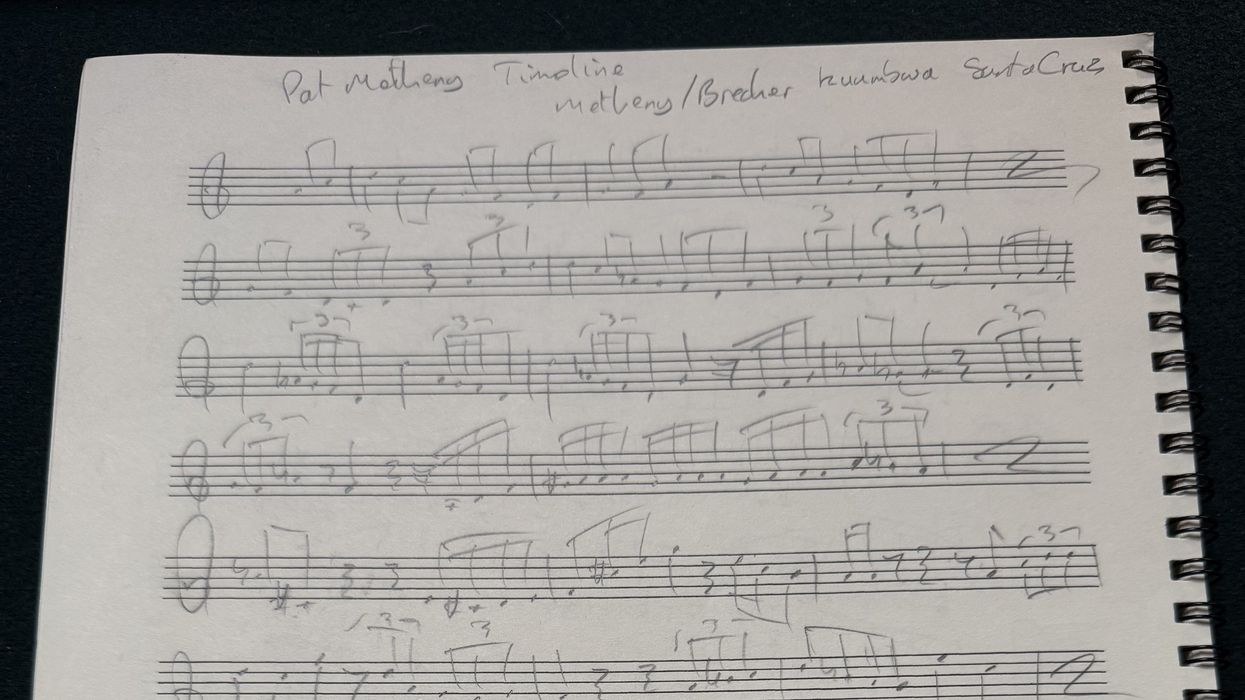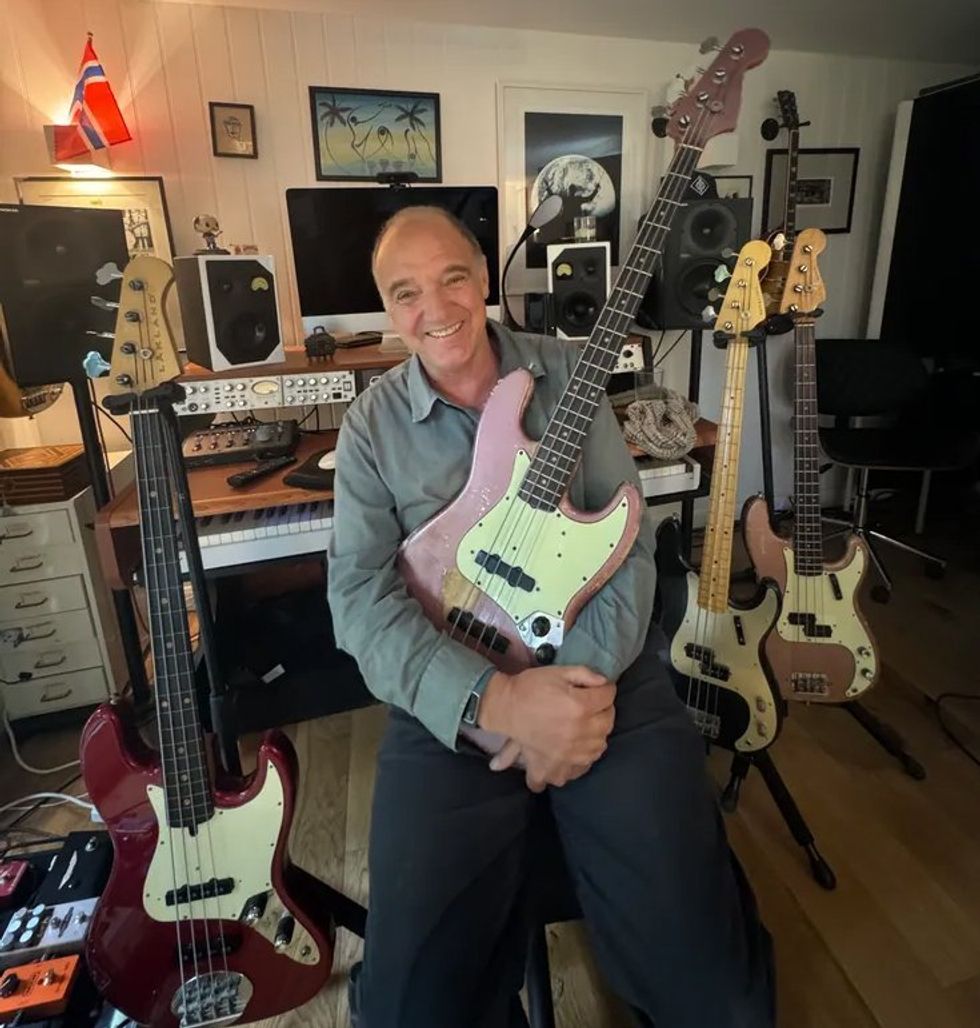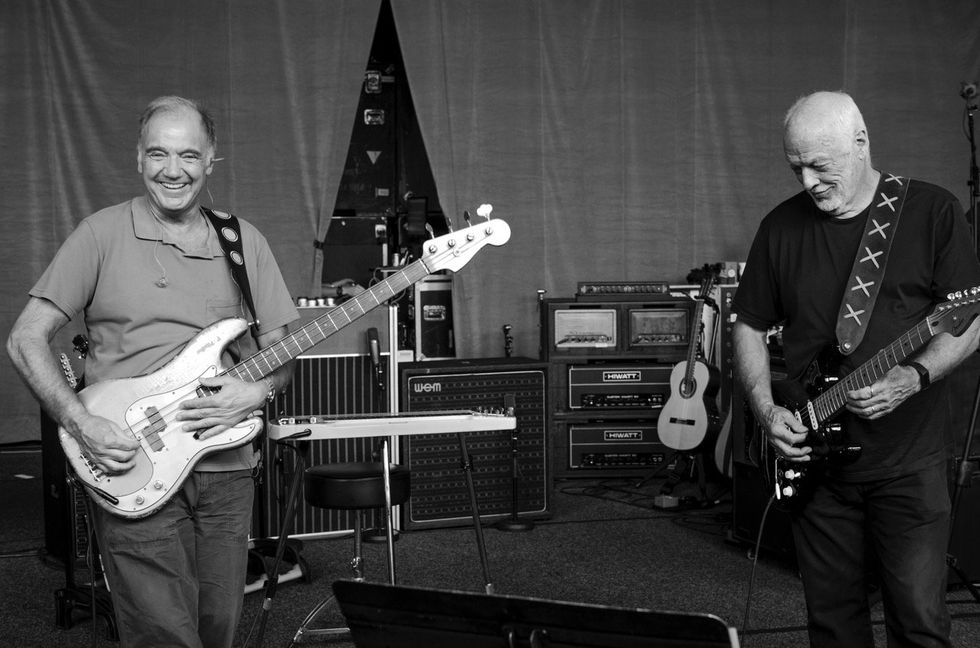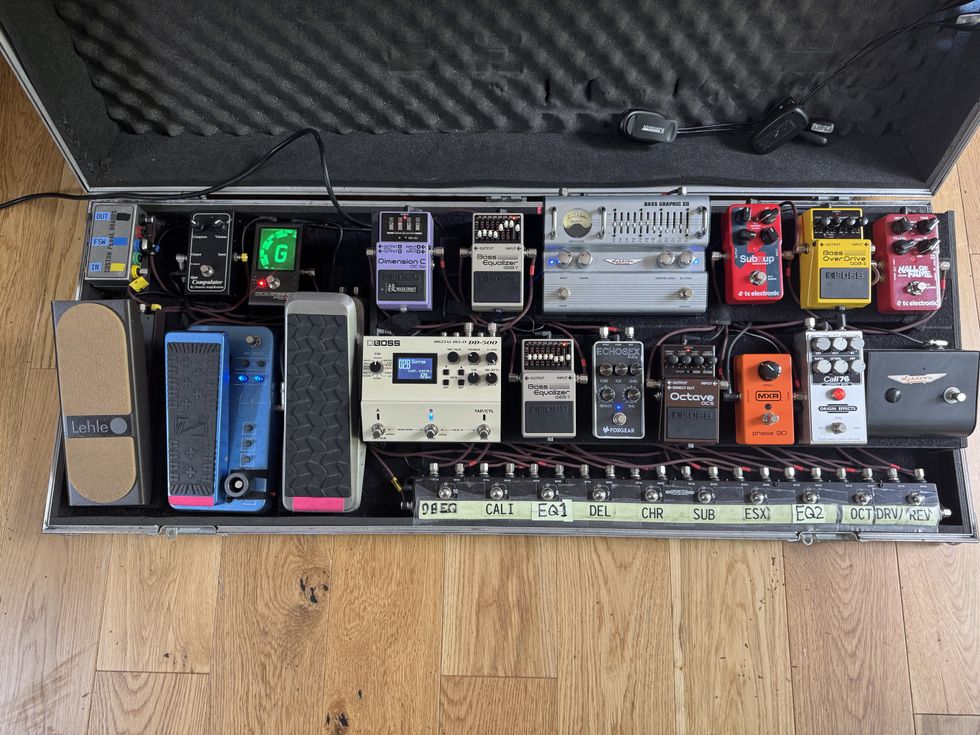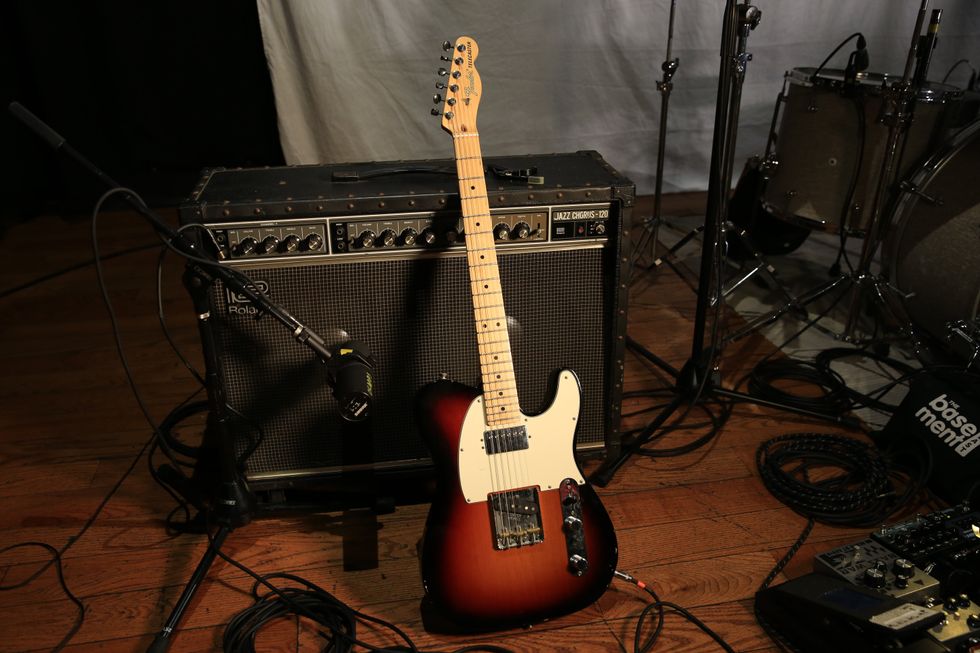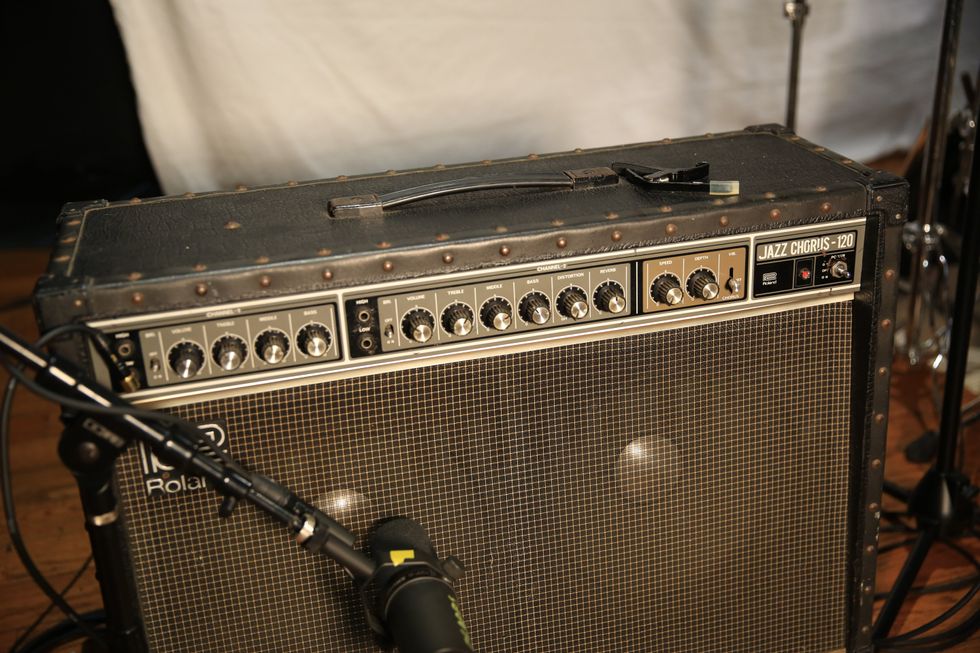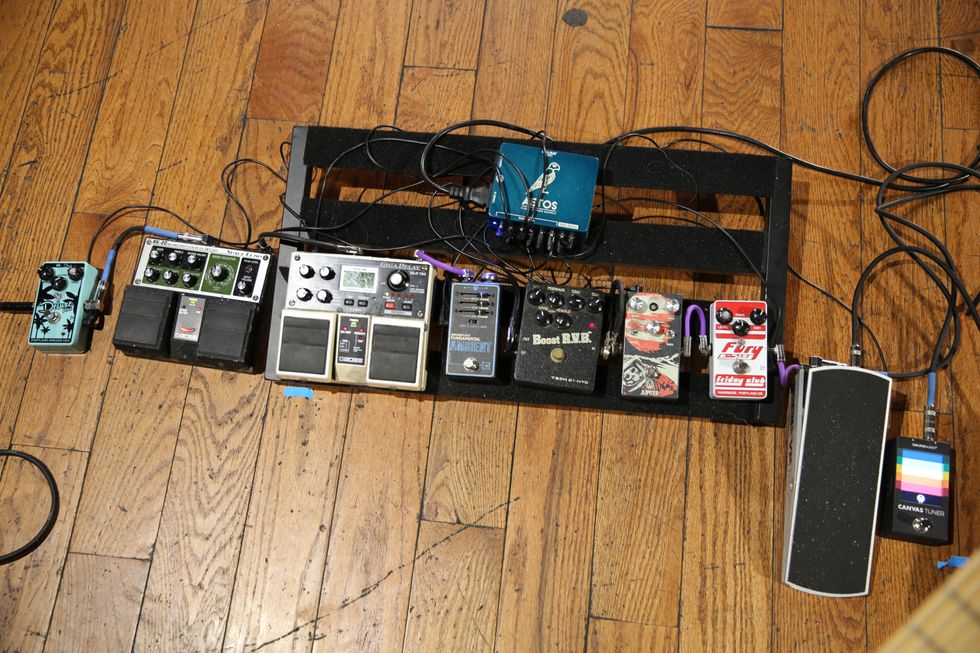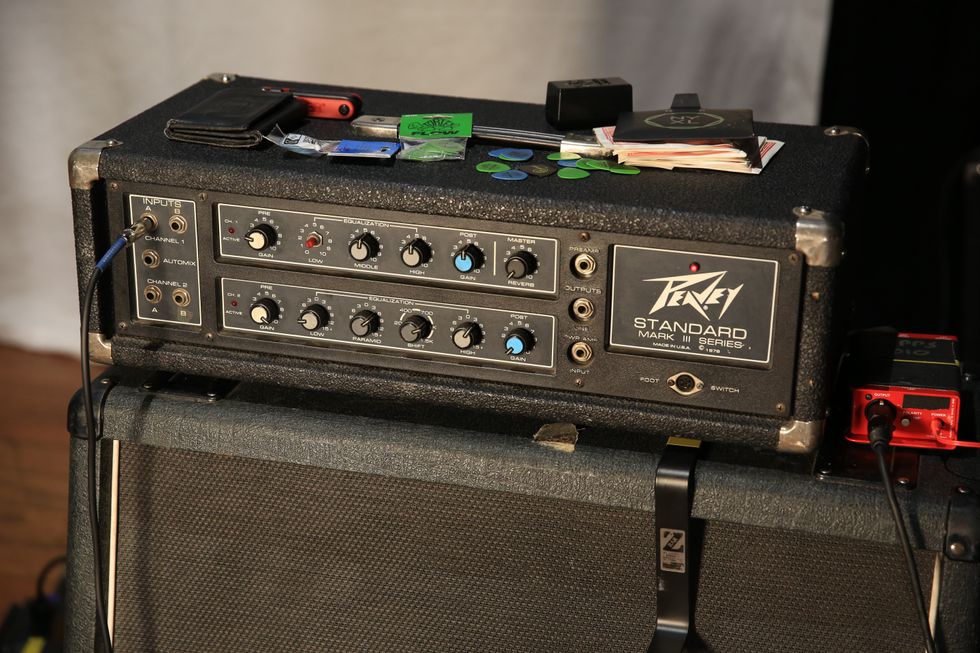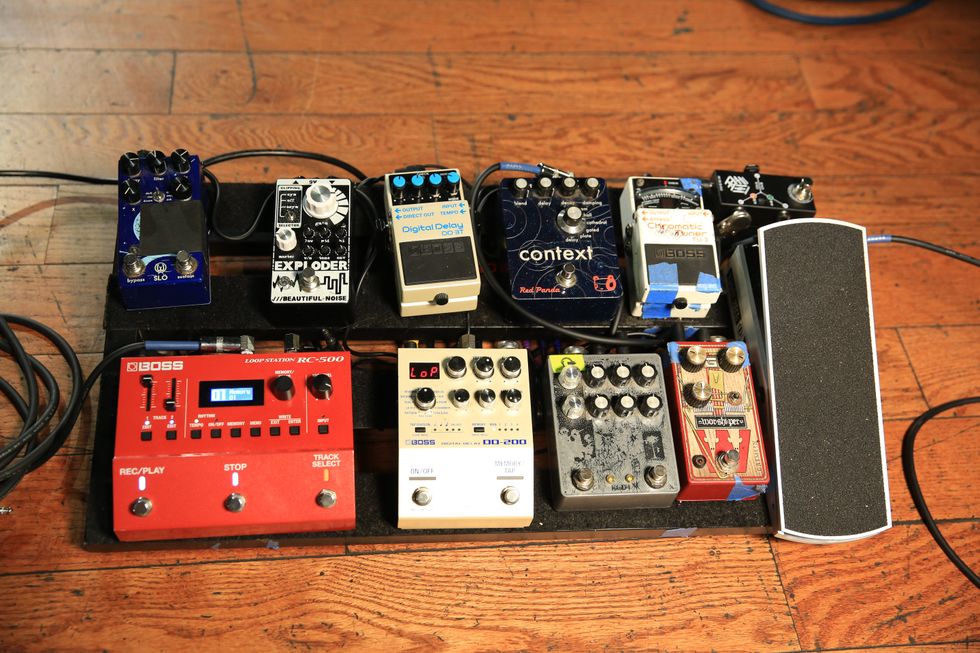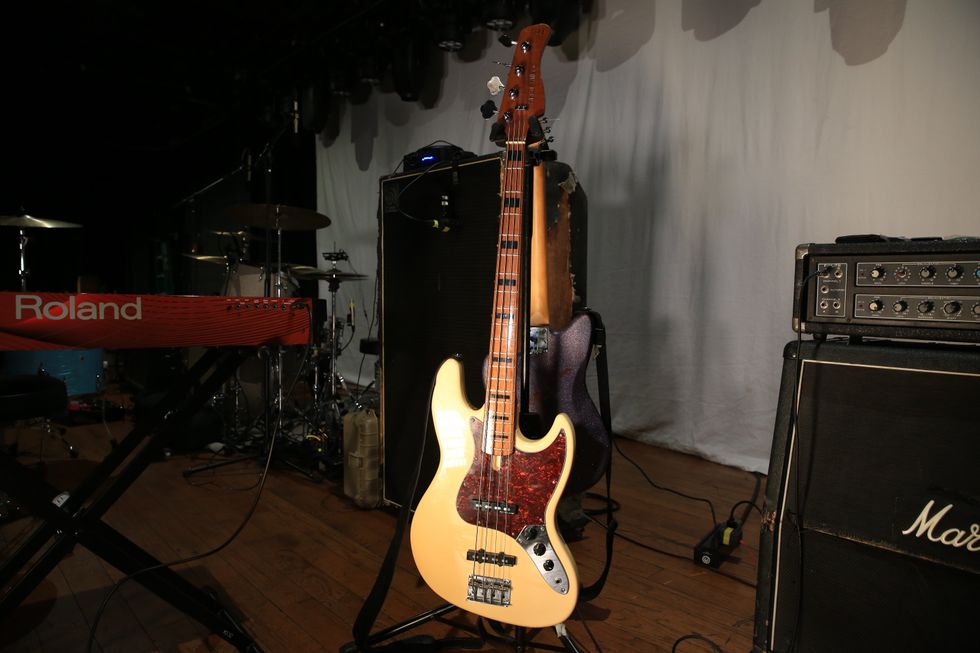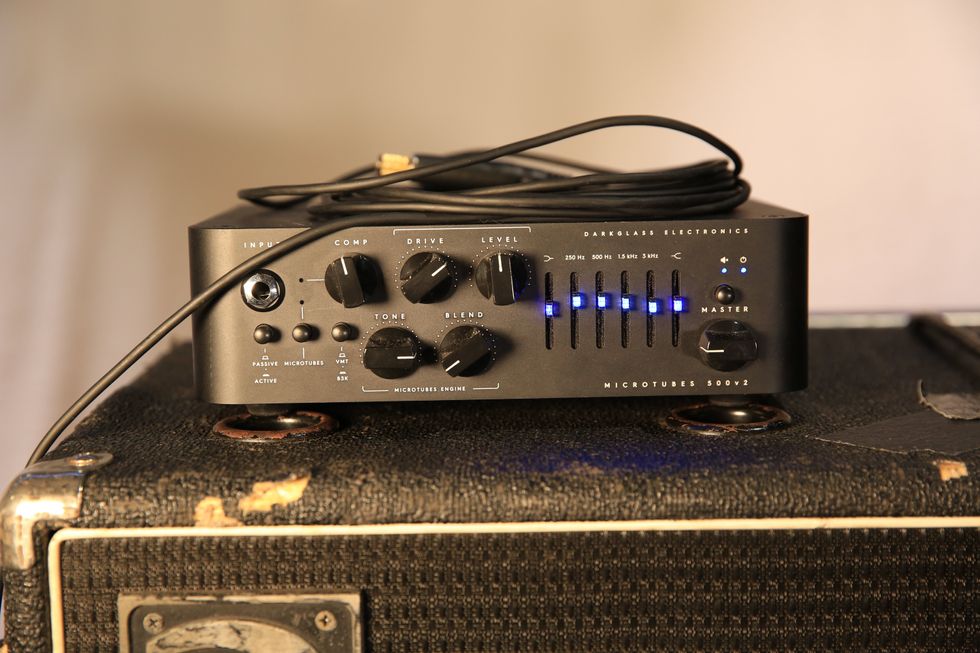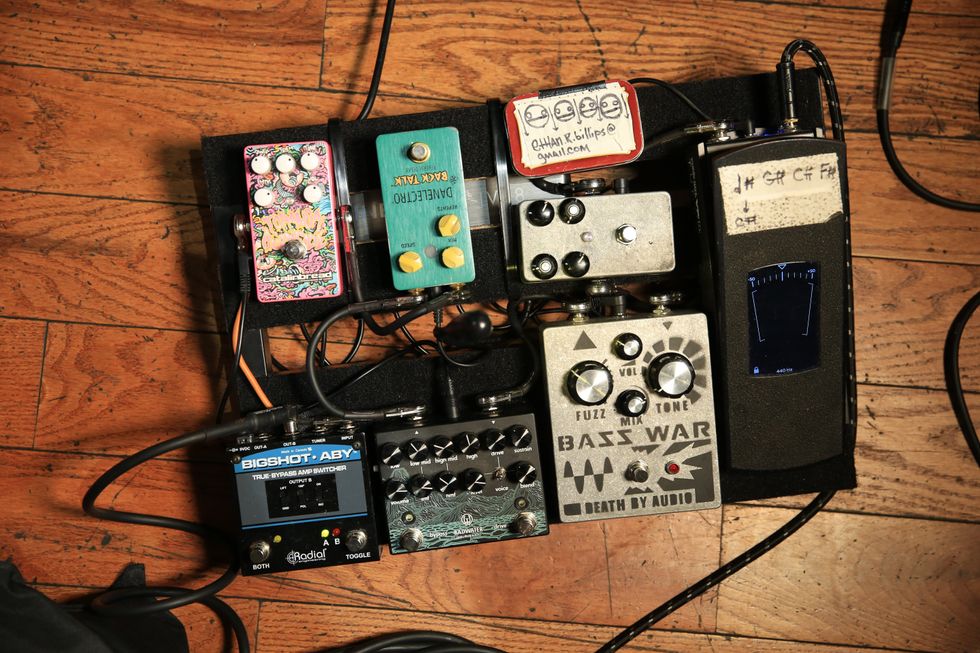Recorded direct into Focusrite Saffire 6 interface into MacBook Pro using Logic.
Clip 1: Fingerstyle bass riff with tone at 75 percent
0:00 - Parallel with bass boost engaged
0:14 - Single-coil with bass boost engaged
0:30 - Series mode
Clip 2: Slap riff with tone at 90 percent
0:00 - Parallel with bass boost engaged
0:10 - Single-coil with bass boost engaged
0:20 - Series mode
RatingsPros:StingRay sound with all the benefits of a short-scale instrument. Awesome passive electronics. Cons: Neck might feel small for larger hands. It’s a bit pricey. Street: $1,999 Ernie Ball Music Man Short-Scale StingRay music-man.com | Tones: Playability: Build/Design: Value: |
What more can be said about a bass that’s almost as iconic as the Precision and Jazz? A lot, actually, since the folks at Ernie Ball Music Man have never been content with simply replicating Leo Fender’s original design. Sterling Ball and his team have been tweaking the StingRay formula for over 35 years by not only expanding the aesthetic spectrum, but also implementing modern-construction techniques for the classic bass. The StingRay we checked out combines inspiration from last year’s StingRay Special, along with passive electronics and—a first for the company—a short, 30" scale. And yes, it still has that StingRay sound.
Shrink ’Ray
If you’re savvy to the most recent versions of the StingRay, Ball and company have made some subtle but significant refinements to the recipe. Ash continues to be the body wood of choice, but the contouring is sleeker, which provides easier access for the plucking hand and an overall good feel against the body. The new short-scale model uses similar styling, but in a slightly smaller shape to preserve the short-scale vibe.
The neck received a bump in the fret department, expanding from 21 to 22 stainless-steel frets. As a result, the neck joint has been sculpted to provide smoother access. The maple neck is capped with either rosewood or maple, and is fastened with five bolts, rather than the original six. J-style bassists will dig the smaller neck and 1.5" nut width.
The tuner hardware has a similar look, but an enhanced feel in its redesign. The aluminum tuners have a slightly thicker clover head, yet weigh a half pound less than the originals. They feel comfortable in the hand and offer smooth, precise adjustments, while at the same time benefiting the instrument’s balance.
The electronics certainly make the short-scale StingRay stand out from its family members. The little monster sports a specially designed, passive humbucking pickup that’s equipped with neodymium magnets. Sonically, these magnets deliver increased output and a slightly warmer tone. Passive electronic lovers will also cheer over the short-scale’s circuit, which comprises a volume control, a 3-way pickup selector, a passive tone control, and a passive bass boost.
Blue Meany
Our test bass made a great first impression. The ultra-marine-blue finish is gorgeous, and contrasts nicely with the maple neck. The instrument is very well built, with all components feeling stout and sturdy.
I’ve found that many short-scale instruments tend to hang at a horizontal position with a strap, but the short-scale StingRay maintained a comfortable playing angle for my style. It also held its balance well in a seated position, which allowed me to focus less on ergonomics and more on playability.
Initially, the neck felt a little too small for my large hands, but I was able to acclimate to the fretting landscape in a relatively short period of time. One has to be a bit careful traversing the upper-frets area, as the narrow fret spacing is not too forgiving. Still, the neck was super-fast, and I was soon taking on runs and technically challenging lines with ease.
I explored the shorty’s tones through a Bergantino rig, consisting of a Forte HP amp and an HG410 cab. Within seconds I heard that classic StingRay sound, a singular timbre with gut-punching lows, and mids and highs that weave perfectly in a mix. The surprisingly versatile passive circuit gives the StingRay’s inherent sound some unique dimensions. Series position delivers thick low-mids and growling, grinding highs. The middle position engages single-coil mode by soloing the front magnets. I wouldn’t say it delivers a “P-style sound,” but it did evoke a familiar old-school tone that became even more pronounced when I dialed down the tone control. The bass is particularly snappy in parallel mode, great for slapping or giving bass lines some extra grunt.
All of these settings were enhanced by the bass-boost circuit. A simple tap on the volume control engages the boost, which delivers a little oomph to the sonic cocktail. Historically, I’ve always dug the StingRay’s 2- and 3-band preamps, but this passive option may already be my favorite.
The short-scale StingRay’s characteristics all shined onstage when I played a recent corporate show. At gigs like these, musical styles can quickly shift from mellow-jazz jams for background dinner music to Top 40 faves you’ve probably played too many times at wedding receptions. The StingRay provided a voice for every need. I created a very satisfying Motown sound for the intro to “My Girl” by switching to the single-coil position, engaging the boost, and cranking down the tone control. With a quick switch to series mode and a crank of the tone control for the next song, I was copping Entwistle’s aggressive bass line for “My Generation.” Throughout the night, the short-scale StingRay impressed with its ability to find the right sound for the song, and fit appropriately in the mix.
The Verdict
One could describe the latest from Music Man as a StingRay that spent too much time in the dryer, but such a description would do this instrument an incredible disservice. It’s very well designed and provides excellent balance and playability. Sonically, it’s impressively versatile, and, to my ears, one of the best-sounding StingRays in the family. Its price is no doubt up there, but it contains all of the qualities of a U.S.-built StingRay—because it is a U.S.-built StingRay—and in a travel-friendly package. I’m anxious to see how ambitious the company will be in expanding the pint-sized series, but in the meantime, they’ve knocked it out of the park with their initial offering.


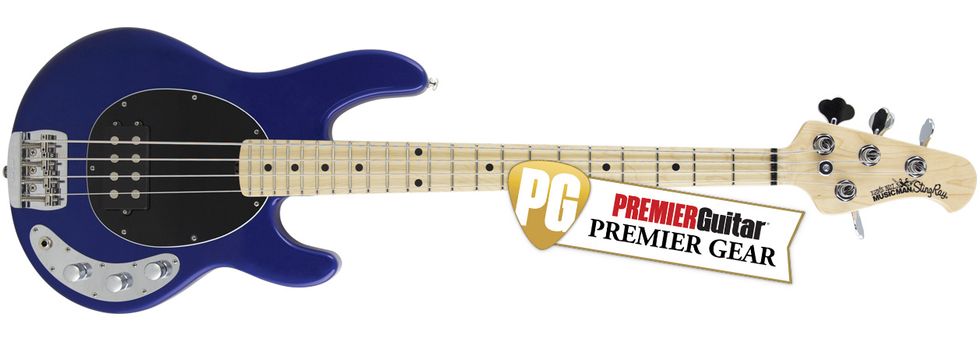


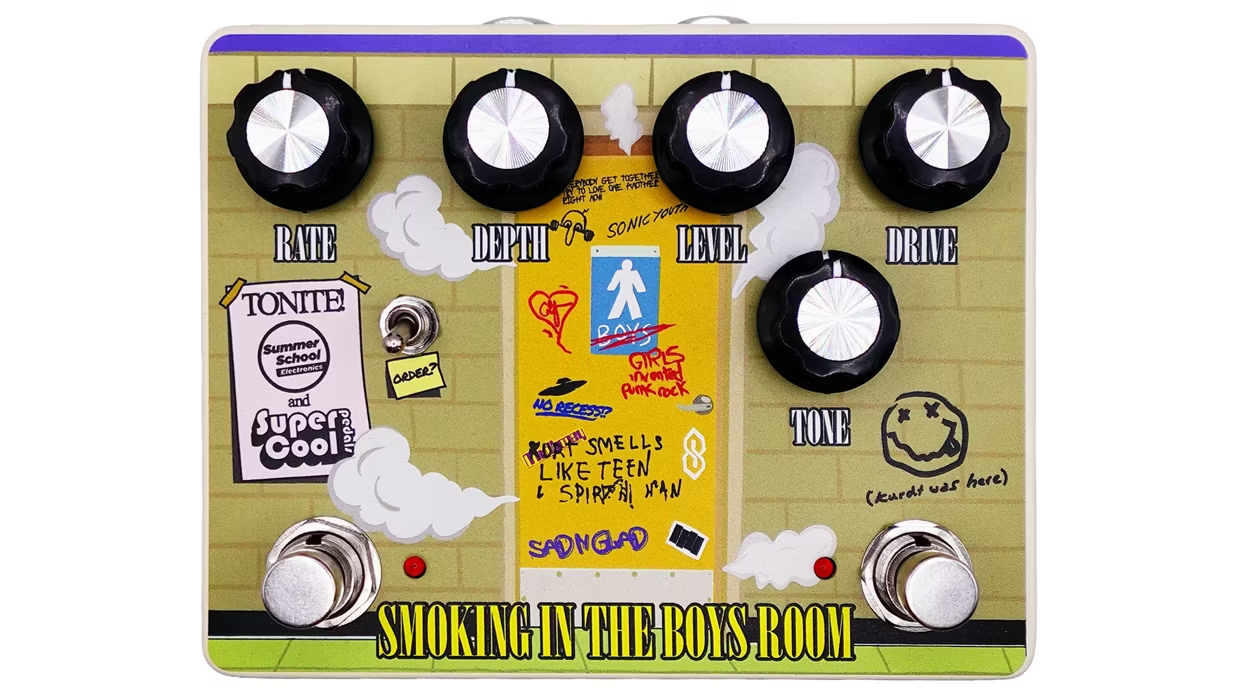



![Rig Rundown: AFI [2025]](https://www.premierguitar.com/media-library/youtube.jpg?id=62064741&width=1245&height=700&quality=70&coordinates=0%2C0%2C0%2C0)












 Shop Scott's Rig
Shop Scott's Rig![Rig Rundown: Russian Circles’ Mike Sullivan [2025]](https://www.premierguitar.com/media-library/youtube.jpg?id=62303631&width=1245&height=700&quality=70&coordinates=0%2C0%2C0%2C0)





